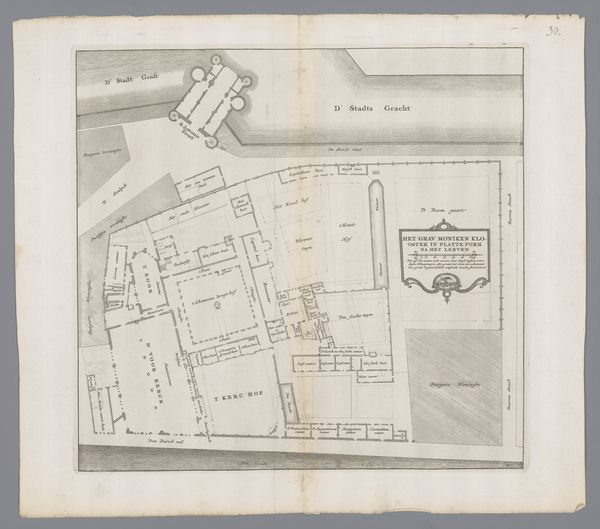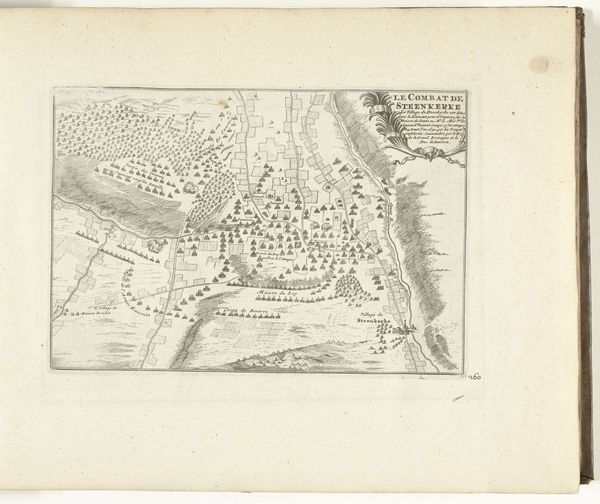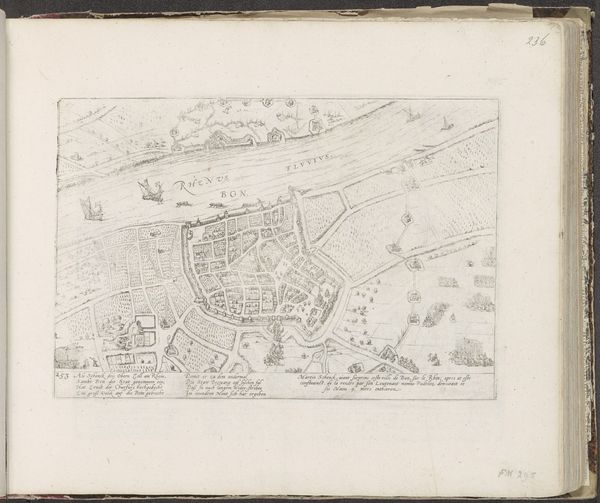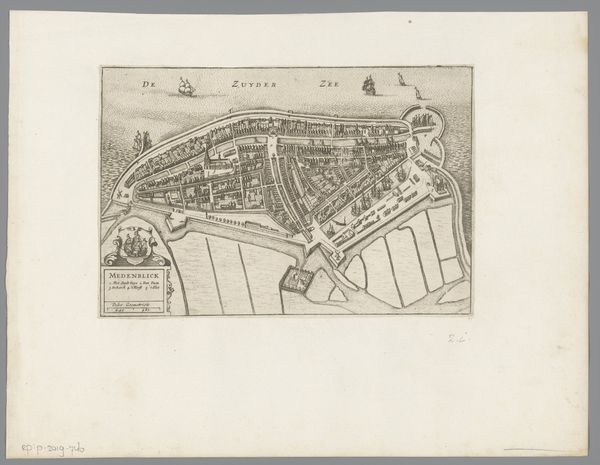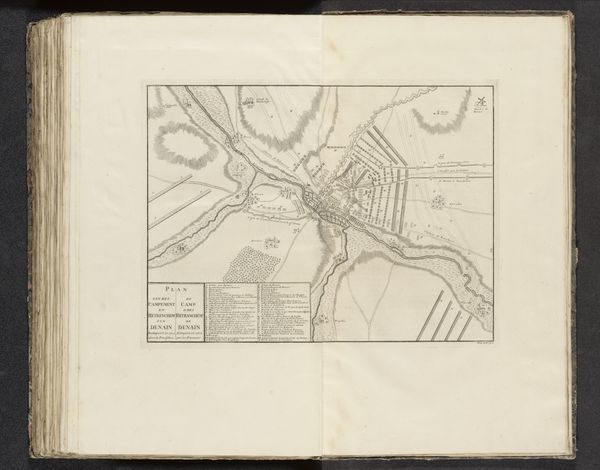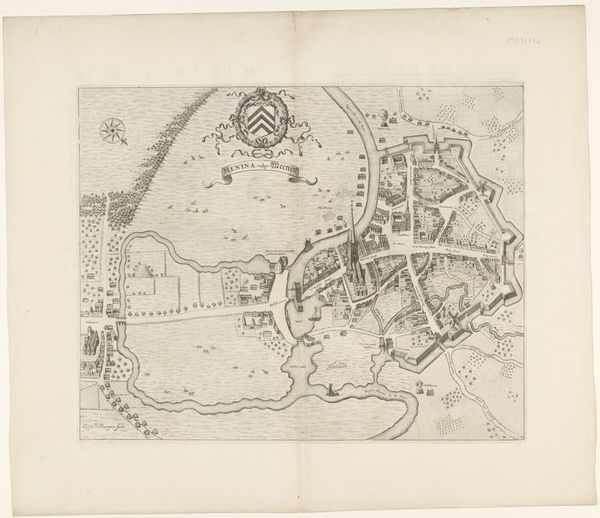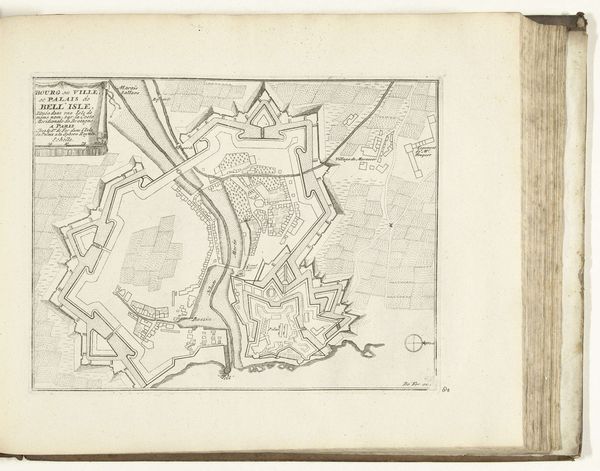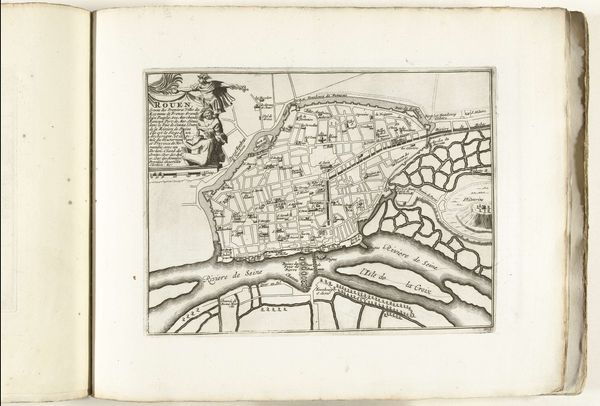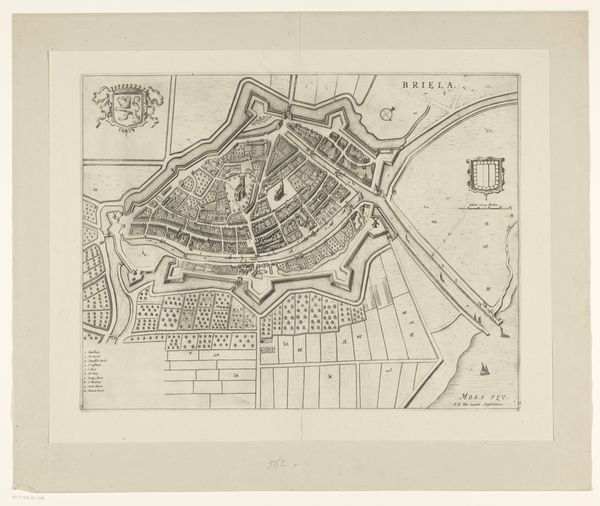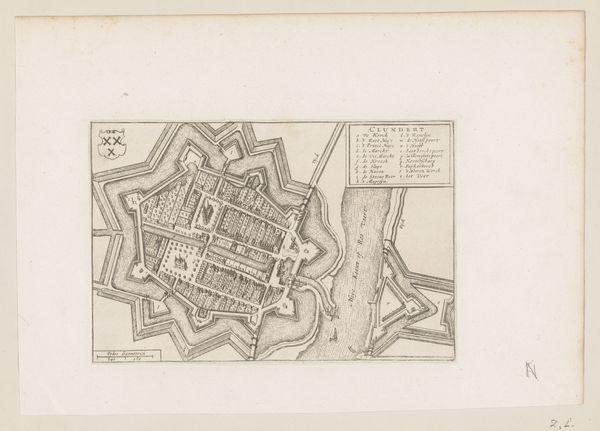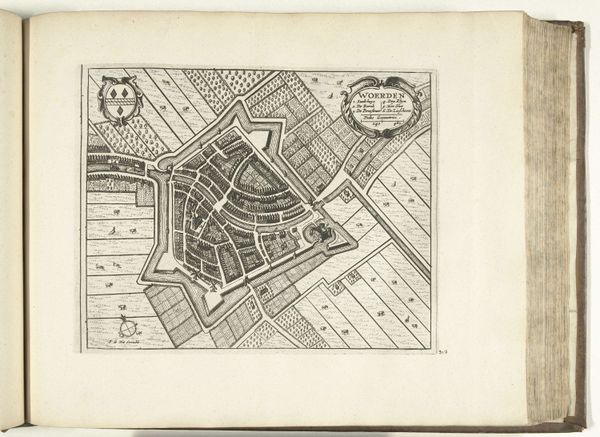
drawing, print, paper, ink, engraving
#
drawing
#
baroque
# print
#
paper
#
ink
#
cityscape
#
engraving
#
realism
Dimensions: height 222 mm, width 280 mm
Copyright: Rijks Museum: Open Domain
Editor: Here we have a city map, titled "Plattegrond van Rochefort, 1726" by an anonymous artist, created with drawing, print, ink and paper through engraving techniques. It strikes me as a remarkably detailed snapshot of urban planning. What can you tell me about the choices behind this map’s creation? Curator: Well, first observe the material itself: the engraving on paper. This speaks to the printing technologies available and the labor involved in producing such detailed images. Engravings allowed for reproduction and dissemination of information, so consider who commissioned this map and why? Was it for military purposes, trade, or civic planning? Editor: I hadn't thought of it as a product of labour before, I was too stuck on seeing it as a work of art! It must have taken hours to create those lines. The inscription seems pretty specific about location. How might its creation have related to the economy of the region? Curator: Precisely. Look at the scale and precision of the fortifications. The map highlights Rochefort as a port and arsenal. Notice how the grid-like street plan contrasts with the organic flow of the river. The river is essential for trade, and the military structures illustrate a concern for controlling those resources. Who benefits from this visual emphasis and why is it significant that this labor occurs at this specific location? Editor: So it’s both a functional document and a kind of advertisement for the town’s importance. I see now how the act of creating it connects to both power and material wealth! Curator: Exactly! By understanding the materials and processes used in its production, we unlock insights into the economic, political, and social contexts that shaped its creation. Now what story does the image try to sell its contemporary viewers? Editor: That's changed my whole view of historical maps! Curator: It's amazing how thinking about materiality opens new ways of experiencing a piece, isn't it?
Comments
No comments
Be the first to comment and join the conversation on the ultimate creative platform.
